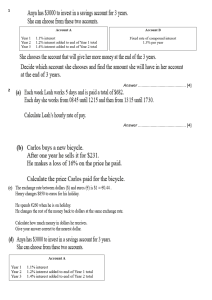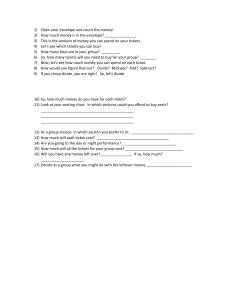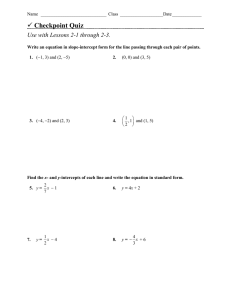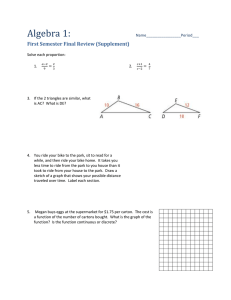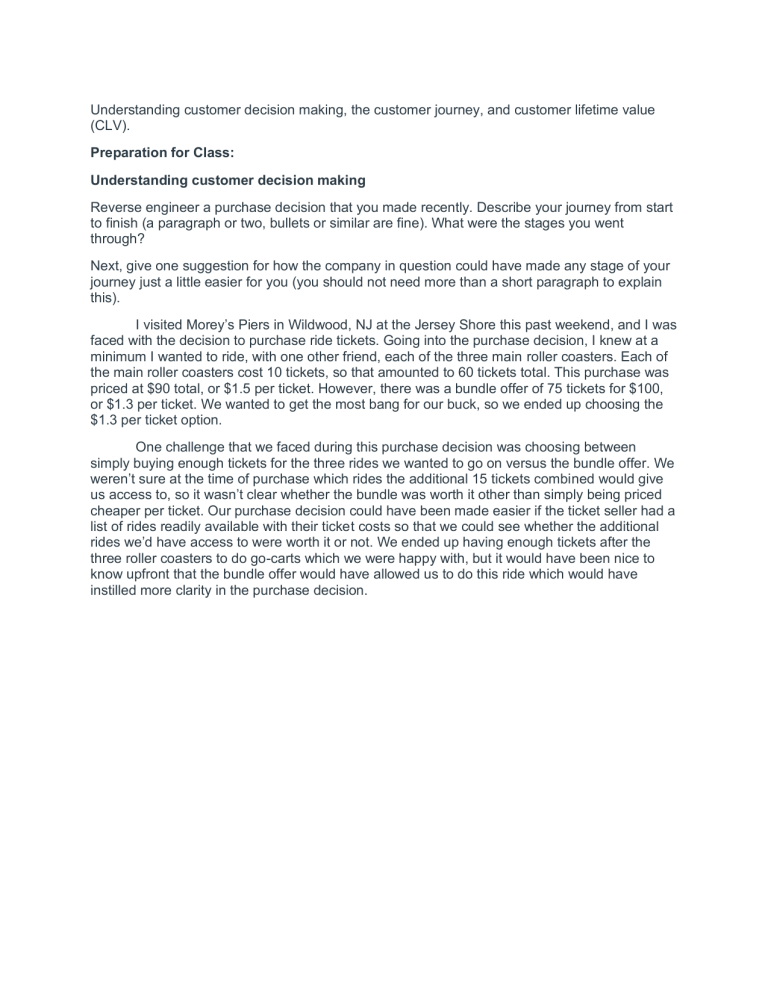
Understanding customer decision making, the customer journey, and customer lifetime value (CLV). Preparation for Class: Understanding customer decision making Reverse engineer a purchase decision that you made recently. Describe your journey from start to finish (a paragraph or two, bullets or similar are fine). What were the stages you went through? Next, give one suggestion for how the company in question could have made any stage of your journey just a little easier for you (you should not need more than a short paragraph to explain this). I visited Morey’s Piers in Wildwood, NJ at the Jersey Shore this past weekend, and I was faced with the decision to purchase ride tickets. Going into the purchase decision, I knew at a minimum I wanted to ride, with one other friend, each of the three main roller coasters. Each of the main roller coasters cost 10 tickets, so that amounted to 60 tickets total. This purchase was priced at $90 total, or $1.5 per ticket. However, there was a bundle offer of 75 tickets for $100, or $1.3 per ticket. We wanted to get the most bang for our buck, so we ended up choosing the $1.3 per ticket option. One challenge that we faced during this purchase decision was choosing between simply buying enough tickets for the three rides we wanted to go on versus the bundle offer. We weren’t sure at the time of purchase which rides the additional 15 tickets combined would give us access to, so it wasn’t clear whether the bundle was worth it other than simply being priced cheaper per ticket. Our purchase decision could have been made easier if the ticket seller had a list of rides readily available with their ticket costs so that we could see whether the additional rides we’d have access to were worth it or not. We ended up having enough tickets after the three roller coasters to do go-carts which we were happy with, but it would have been nice to know upfront that the bundle offer would have allowed us to do this ride which would have instilled more clarity in the purchase decision.
